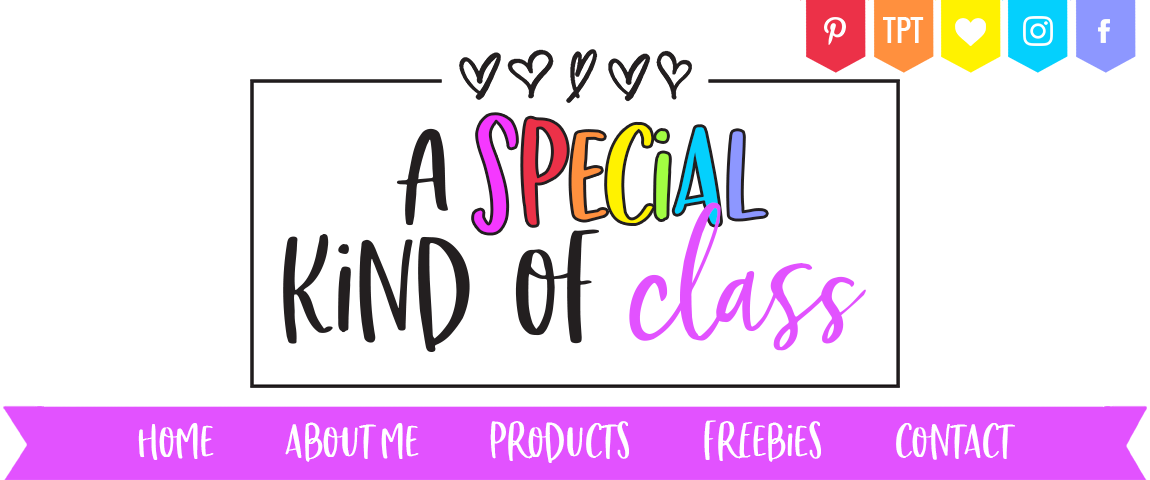I'm so excited to be joining on the Daily 5 book study with my friends from Freebielicious. If you haven't gotten your copy, you can grab it below. This the second edition of the book and they have made some changes and refined the program since the first book came out.
When the first book came I was so excited. I read it from front to back and had every intention of implementing it the following year. Unfortunately, since I teach special ed, the class I had that year was not conducive to the program. The children were not at a point where they could independently manage the centers and with only 7 children (and several could be gone at any given time for therapy), my enthusiasm for something great waned.
Low and behold, after I received my class list for next year, I realized that next year may be the perfect time for me to try and implement the program again. Next year I will have 10 children and the teacher next to me will have 8. She also wants to give it a go, so we are going combine our two classes for our literacy block to try our hand at Daily 5. We still have special children but these children will be ready for some more intensive literacy instruction.
Chapter 1 is all about how the Daily 5 has changed and evolved over the years. I think all teachers, well myself anyway, reflect on what they do, decide what worked and didn't work and then adjust their program accordingly.
Although I didn't do The Daily 5, I did try my hand at some centers this year. In looking at what I did, it was, in some ways, similar to the Daily 5 model.
This year I had sight word centers and the kids loved them. I combined with another class so between the two of us we had 15 children. We split the children into five groups according to their ability. Since two classes were combined, we had two teachers available and our educational assistants (4).
For our hour literacy block we split it into two half hour time slots. For the first 1/2 hour, one group came to me, one group went to the other teacher and two groups went to centers. The fifth group was our life skills group and they did sensory activities. In the second 1/2 hour, we switched groups and the 2 that were at centers came to one of the teachers and the 2 with teachers went to centers. The life skills group did a gross motor activity.
For the teacher groups, I did a guided reading or phonics lesson and the other teacher did writing.
So as I got thinking, here are the things I'm doing that are the same or similar:
The children have choice:
When the children picked a center they had a choice of 10.
Some of the options were the same:
The children worked on writing with one of the teachers.
Word Work was a component of the centers.
Here are some of the differences:
Some of the options are missing:
Read to self, listen to reading and read to someone weren't touched on.
Stamina:
We didn't really work on this. We just went straight to the 1/2 hour blocks.
Brain breaks and mini lessons
This something we didn't do either.
Chapter 2 focuses on core beliefs.
These foundations are:
1. trust and respect
2. community
3. choice
4. accountability
5. brain research
This chapter really hits home because I think it's this foundation that will lead to success. Here's my thoughts:
1. Trust and respect: I've never treated my kindergarten students as though they are 2 years old. I've always treated them as little people. I hate, hate, hate it when people treat my students as younger than their age. Just because they are in a wheelchair or because mentally they may be working at a younger age level (often times they are not, people assume wrong), does not mean that they need to be treated that way. They are not babies. I have always felt that if you treat kids with respect and at the level you expect them to be then they will step up to the plate and trust you.
2. Community: Is so important. Children who trust and respect each other can work together and accomplish so much more.
3. Choice: My students did so much more when they were given a choice about the centers they went to. It shows them that I trust them.
4. Accountability: Self-reliance is the key word in our curriculum and I think that is such a important step to becoming independent.
5. Brain Research: I think this type of research has to be the basis of what we do. Working within proven parameters with only make teaching easier for us.
In the end, my students are usually only with me for one year before they are integrated back into their home schools. That means I have one year to prepare them for the "big" world. One year to teach them the skills and independence to cope in a larger class with less support.
I think the Daily 5 will be the perfect start.
Since I'm just starting out I made this posters for the different choices. You can pick them up for free by clicking on the picture below.
Don't forget to follow along with the book study each week.
You can also find more great posts on chapters 1 and 2 by clicking on the links below.




















































